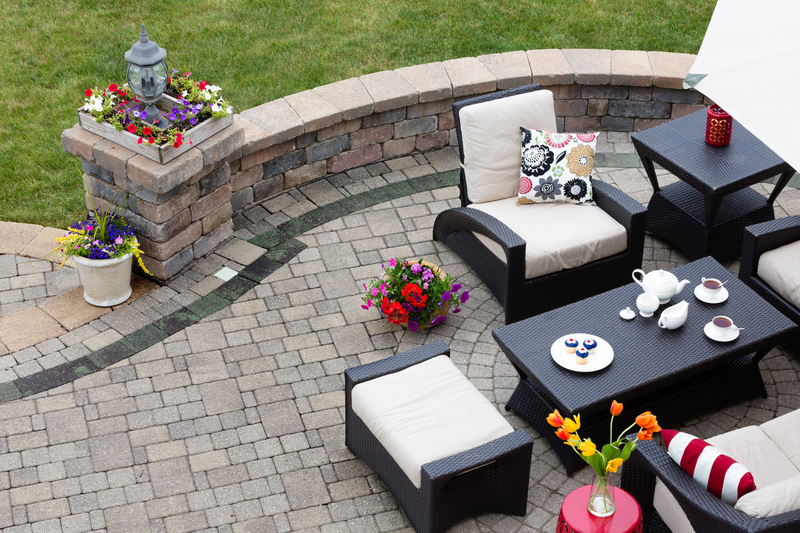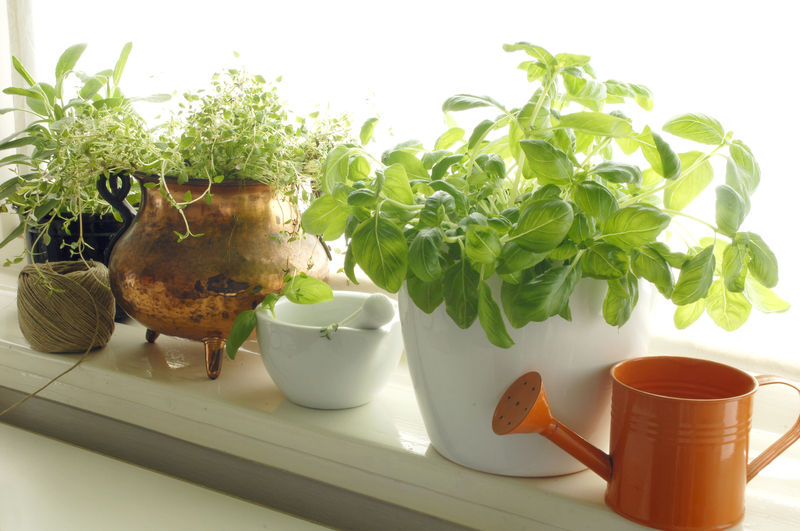The Science and Art of Creating Unique Hedge Shapes
Posted on 07/09/2025
The Science and Art of Creating Unique Hedge Shapes
Have you ever marveled at intricate topiary animals or geometric wonders in a well-manicured garden? The practice of forming hedges into imaginative and precise shapes is more than landscaping--it's an intersection of horticultural science and artistry that transforms outdoor spaces. This comprehensive guide delves into the fascinating process of creating unique hedge shapes, unraveling the science behind plant growth and the expressive technique of hedge sculpting.

Understanding the Basics: What Are Unique Hedge Shapes?
Unique hedge shapes, also known as topiary, involve sculpting shrubs into elaborate forms, such as animals, spirals, arches, and geometric designs. Topiary has a rich history, dating back to ancient Roman gardens, and continues to capture the imagination of modern gardeners and landscape architects alike.
Why Create Unusual Hedge Designs?
- Aesthetic enhancement--From whimsical designs to sleek modern lines, creative hedging uplifts garden spaces.
- Personal expression--Hedges serve as living sculptures reflecting the owner's style and vision.
- Practical function--Besides beauty, sculpted hedges can define spaces, provide privacy, and act as windbreaks.
The Botanical Science Behind Shaping Hedges
1. Plant Biology: Choosing the Right Shrubs
Not every shrub is suitable for intricate hedge shapes. The science starts with plant selection. Common species known for their dense foliage and resilience to pruning include:
- Buxus sempervirens (Boxwood) -- prized for its fine leaves and compact habit
- Taxus baccata (Yew) -- offers dense growth and longevity
- Ilex crenata (Japanese holly) -- resembles boxwood but more resistant to disease
- Ligustrum (Privet) -- popular for vigorous growth and easy shaping
Key characteristics needed for creating unique hedge forms:
- Small leaves or needles for a tighter, neater look
- Dense branching, allowing for sharp definition
- Fast recovery and regrowth after pruning
- Ability to tolerate frequent cutting
2. Principles of Hedge Physiology
The magic of unique hedge shapes relies on understanding apical dominance--a plant hormone-driven process that determines which buds grow and which remain dormant. By selectively trimming leading shoots, gardeners encourage lateral growth, resulting in denser foliage that can be shaped more precisely.
Regular, precise pruning redirects the plant's energy, allowing hedge artists to 'train' shrubs into desired shapes over months or years.
The Art of Shaping: Techniques for Unique Hedge Designs
1. Planning Your Hedge Shape
- Select the right hedge plant for your climate and desired shape.
- Visualize the end goal: Use sketches or digital tools to conceptualize the shape.
- Understand plant growth rates, as complex shapes require patience and time.
2. Essential Tools for Artistic Hedge Trimming
Crafting unique hedge formations demands the right equipment, such as:
- Hand shears and secateurs for close work and detail
- Powered trimmers for larger, sweeping cuts
- String, stakes, and frames to mark out geometric or animal shapes as cutting guides
- Sharp knives or topiary scissors for meticulous finishing
Always keep blades sharp to ensure clean cuts and minimize plant stress.
3. Step-by-Step: Shaping a Unique Hedge
- Preparation: Clear the area and ensure established roots for healthy regrowth.
- Framework: Use wire frames or wooden guides for complex shapes, especially when learning.
- Initial rough pruning: Cut away major excess to outline the general shape.
- Fine trimming: Gradually refine the figure, stepping back frequently to check symmetry and proportions.
- Maintenance: Regular trimming sustains the form as the shrub grows.
Patience is essential; unique hedge artistry can take several seasons to perfect.
The Creative Process: Designing Unique Hedge Art
Topiary Forms and Styles
- Geometric: Spheres, cubes, cones, and pyramids are classic and modern favorites.
- Fantastical: Animals, birds, and even recognizable objects (trains, teapots) engage and amuse.
- Spirals and curves: Created by training young plants around a central post and trimming to follow the curve.
- Architectural: Hedges as living walls, arches, or even green mazes.
For inspiration, look to world-famous gardens such as Levens Hall in the UK or the whimsical Parc de Marqueyssac in France, renowned for their spectacular topiary creations.
Principles of Artistic Hedge Shaping
The art of unique hedge design draws on fundamental artistic principles:
- Proportion and scale: Choose size and shape that fit the garden's overall aesthetics.
- Symmetry or intentional asymmetry: Both have dramatic effects in landscape design.
- Texture and shadow: Pay attention to how sunlight plays on the hedge's contours throughout the day.
- Perspective: Consider how the shape looks from multiple viewpoints and distances.
Many artists sketch the intended form or use 3D design apps before beginning actual pruning.
Science-Driven Hedge Care: Maintaining Unique Forms
Maintenance is key to keeping distinctive hedge shapes healthy and visually striking. Here's how:
Optimal Pruning Schedule
- Spring and early summer: Vigorous growth means the best time for shaping.
- Late summer tidying: Light touch-ups maintain the contours.
- Avoid late fall pruning: New growth is vulnerable to winter frost damage.
Feeding and Mulching
- Fertilize regularly in early spring to support lush growth.
- Mulch the base to conserve moisture and suppress weeds.
Disease and Pest Control
Monitor hedges for signs of blight (especially in boxwood), leaf spot, aphids, and spider mites. Remove affected branches and use organic or chemical treatments as needed.
Choose disease-resistant varieties where possible to simplify care.
Watering Strategies
Even-mature hedges need consistent watering, especially after shaping or during hot spells. Drip irrigation systems beneath mulch work best for larger installations.
Modern Innovations in Hedge Sculpting
The art and science of unique hedge forming continue to evolve, with exciting new techniques and tools:
- Laser-guided trimmers: Provide precision on large, formal hedges.
- 3D-printed shaping frames: Allow quick setup of complex animal and object shapes.
- Slow-release nutrients: Ensure even growth and stress resistance for intricate figures.
- Data-driven gardening apps: Track hedge growth and provide tailored pruning advice for your unique topiary.
Common Mistakes in Creating Unique Hedge Designs -- And How to Avoid Them
- Over-pruning: Weakens the plant and can result in patchy growth.
- Poor plant selection: Using species prone to disease or with large leaves leads to messy results.
- Lack of regular trimming: Neglecting maintenance allows the shape to blur and deform.
- Forgetting the basics: Healthy soil, mulch, and hydration are as critical as blades and artistry.
Tip: Begin with simple geometric shapes until you master pruning techniques--then progress to more extravagant designs.
The Psychological and Social Benefits of Unique Hedge Shapes
Beyond beauty and creativity, unique hedge shapes can deliver surprising rewards:
- Mental health boost: Gardening and artistry together relieve stress and offer meditative focus.
- Community connection: Standout hedge topiaries spark curiosity, conversation, and community pride.
- Property value uplift: Artistic landscaping can increase your home's curb appeal and value.
Famous Examples of Unique Hedge Shapes
- Levens Hall Topiary Gardens (England): Over 300 years old, these gardens showcase some of the world's most iconic hedge shapes.
- Parc de Marqueyssac (France): Features more than 150,000 hand-pruned boxwood shrubs in fantastical forms.
- Disneyland Topiary (USA): Beloved Disney characters come to life in living green sculptures.
These masterpieces demonstrate how the combination of botanical science and artistic vision can create unforgettable landscapes.

Getting Started: Tips for Beginners in Hedge Shaping
- Choose easy-to-shape species like boxwood or privet.
- Start small--simple spheres or cubes build confidence and skill.
- Invest in quality tools and keep them sharp for best results.
- Observe local gardens or visit topiary parks for on-site learning and inspiration.
Conclusion: Cultivating Living Art Through Unique Hedge Forms
Whether your goal is a whimsical animal, a bold spiral, or a meticulously straight hedge, the creation of unique hedge shapes is a rewarding journey that fuses horticultural science and boundless creativity. By choosing the right plants, using scientific pruning techniques, and approaching each project as a living artwork, you can transform any garden into a place of delight and intrigue.
Let your imagination flourish, and discover the art and science of creating unique hedge shapes--a timeless tradition with infinite possibilities for personal and public green spaces.



